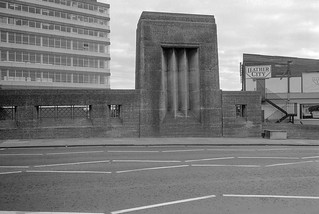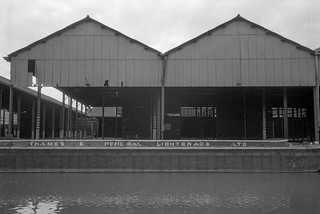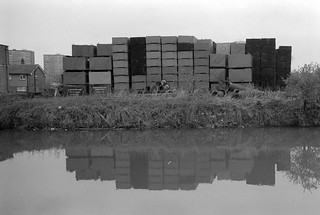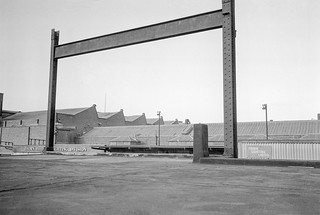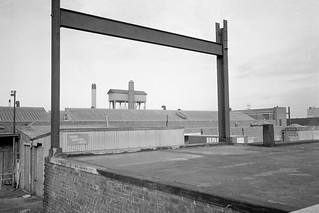The North Circular Road crosses the Lea Navigation in Edmonton, where there are now a whole series of six bridges over it, though I think there were fewer when I was taking these pictures in 1983. The street map I used shows the North Circular as just a single carriageway, Angel Road, which on the east side became the Lea Valley Viaduct, and I think this picture is taken across the whole of the roadway.
To the south of the North Circular there were industrial and commercial areas on both banks, with Clements International UPH, “Europe’s Largest Maker” on the west, a huge furniture showroom (I suppose the UPH stands for upholstery) and beyond it to the south a timber wharf.
On the east bank wasDorford Wharf and the extensive Lea Valley Trading Estate and Kingsway Industrial Estate, and another timber wharf, which I’ll post pictures from later.After re-instalapi-ms-wi-
On the east bank wasDorford Wharf and the extensive Lea Valley Trading Estate and Kingsway Industrial Estate, and another timber wharf, which I’ll post pictures from later.
I think all of the businesses by the navigation were closed, including the cafe here. Now the whole area has been cleared.
Although commercial traffic on the Lea Navigation had come to an end, there were still a number of lighters on it, including this one moored in front of a timber wharf. There were so many timber wharves on the Lea because the entrances to the Limehouse Cut and Bow Creek leading to the Lea Navigation were opposite the Surrey Docks, where ships brought in timber from the Baltic and elsewhere and which had large storage ponds where it was stored and seasoned.
There is still a timber merchant not far away, just to the north of the North Circular at Ash Wharf, but none of its timber comes in by barge.
You can click on any of the above images to see a larger version in the Flickr album River Lea – Lea Navigation 1981-1992.
All photographs on this and my other sites, unless otherwise stated, are taken by and copyright of Peter Marshall, and are available for reproduction or can be bought as prints.
